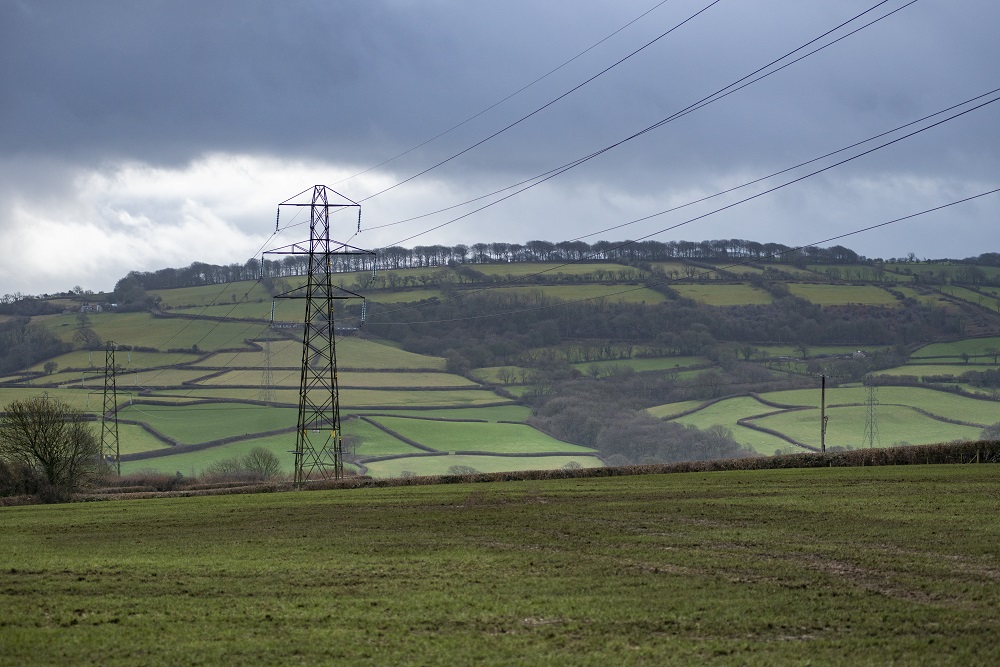Calls for government to investigate underground cables as alternative to pylons

Elgan Hearn Local Democracy Reporter
Councillors are to debate a motion to lobby the Welsh Government to thoroughly investigate if putting energy cables underground is a possibility.
These would take electricity that could be created in the county to the national grid instead of pylons.
The issue has been raised again due to planning applications deemed to be Developments of National Significance (DNS) which will be dealt with by Welsh Government planning inspectors that propose using pylons to take energy produced in Powys to be connected to the national grid.
“Connected Powys”
At a council meeting on Thursday, March 7 the motion will be put forward by cabinet member for a connected Powys, Liberal Democrat Cllr Jake Berriman.
Cllr Berriman’s motion calls for a: “technical evaluation of under-grounding power cables from energy parks.”
Cllr Berriman said: “It is widely recognised that the U.K needs more wind and solar farms and nuclear power in the coming years to meet low-carbon energy targets and the demand on the grid will only increase the more transport, industry, and domestic heating are electrified to reduce carbon emissions.”
In recent plans for two sets of pylons to link proposed energy parks in Powys to the national grid have been lodged with the government.
Cllr Berriman said: “Such plans are potentially controversial.”
Cllr Berriman’s cabinet brief includes the planning portfolio explains that the Powys policy is that “wherever possible” power lines should be put underground to “reduce visual impact.”
Cost
But the issue with this is cost which has been highlighted by developers who say that this is because underground cables are difficult to maintain and repair.
Due to this Cllr Berriman calls council to: “to commission an independent study, with comparative trials as appropriate, into the technical viability of cable ploughing being deployed extensively for the largest power lines to serve the energy parks arising from the Government’s renewable energy plans for the county, to minimise ongoing visual impacts.”
Liberal Democrat Cllr Glyn Preston will second the motion.
Across the whole county there are several planning applications for energy creation projected classed a DNS.
Proposals classified as DNS mean Powys council is a consultee rather than decision-maker.
Inspectors at PEDW (Planning and Environment Decisions Wales) will look at all the information provided in the DNS application and eventually give advice to a Welsh Government minister on what decision to make. The minister will then announce the decision.
Impact report
The council is expected to provide a local impact report (LIR) as part of the process. These reports explain the issues and planning policies that relate to the development, and the council can also submit its views on the development.
The current DNS which are for a variety of wind, solar and energy infrastructure proposals in Powys are:
Mynydd Lluest y Graig wind farm- roughly between Llanerfyl and Llanbrynmair.
Garn Fach wind farm – south of Newtown.
Nant Mithil Energy Park – Radnor Forest.
Banc Du energy park – near Llangurig.
Rhiwlas energy park – near Llangurig.
Carnedd Wen wind farm – near Llanbrynmair.
Llyn Llort Energy Park – near Llanerfyl.
Green Gen Towy Usk project – Overhead cables (pylons) from Nant Mithil to near Carmarthen.
Aberedw Energy Park – near Builth Wells.
Bryn Gilwern Energy Park – near Llandrindod Wells.
Esgair Galed Energy Park – between Llanidloes and Llanbrynmair.
Support our Nation today
For the price of a cup of coffee a month you can help us create an independent, not-for-profit, national news service for the people of Wales, by the people of Wales.





Ask anybody along the M4, it is only rural Wales, not really Wales, as we are only a handful of throwbacks that live here and have a romantic vision of ourselves as living myths…
I’ve had an inkling today of how little we matter to the majority of the population of Cymru, so windmills, pylons; who cares, we are simple peasants working in our masters fields and quarries. Do what you will…
I suspect that the lifetime costs of underground cables will be similar to overhead cables. Yes underground are more expensive to install initially and to maintain but they are not exposed to the weather/wind and I suspect will not fault nearly as often as overhead. There are no pylons to maintain, so again a cost saving. I think I read somewhere that there is a company that has developed a narrow trench and fill system for underground cables that is much less costly or intrusive (during installation) than traditional underground installation methods. Part of the problem I suspect is inertia… Read more »